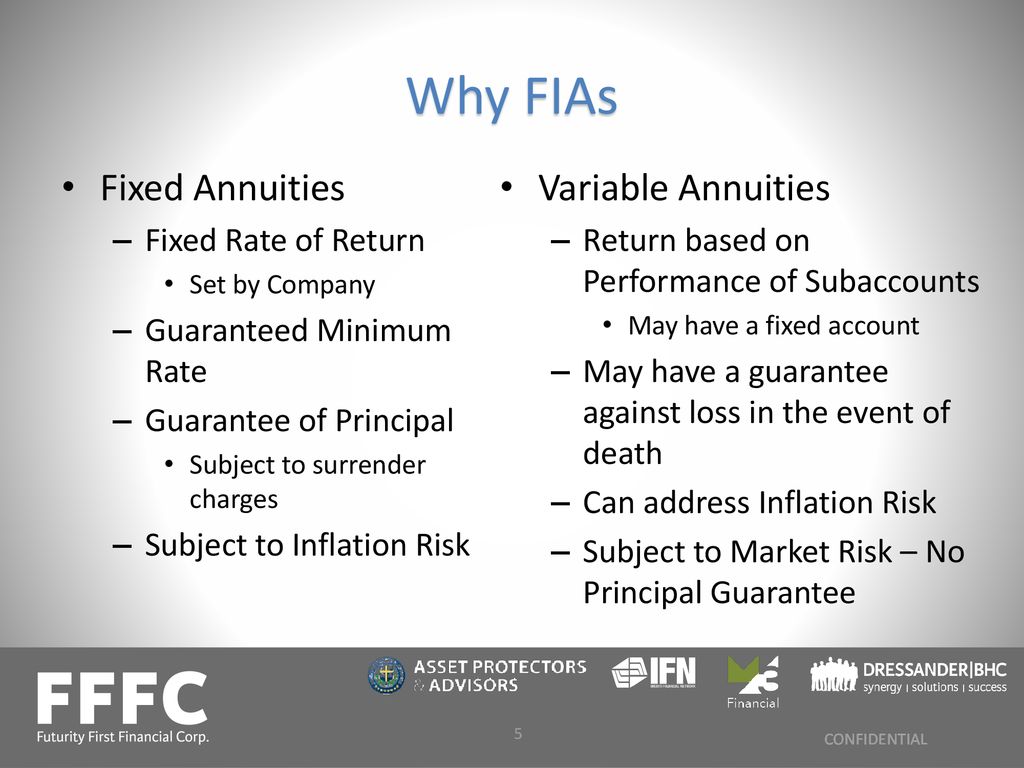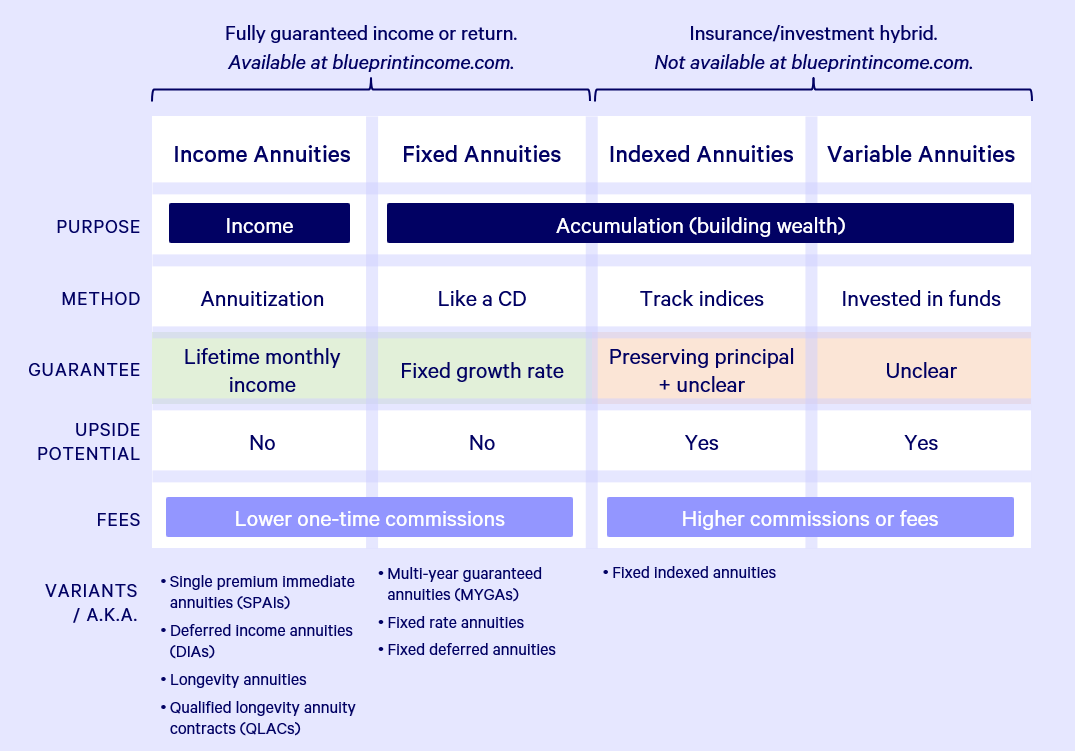All Categories
Featured
Table of Contents
Equally as with a fixed annuity, the proprietor of a variable annuity pays an insurance provider a lump sum or series of payments for the promise of a series of future settlements in return. Yet as mentioned over, while a taken care of annuity grows at a guaranteed, continuous rate, a variable annuity grows at a variable rate that relies on the efficiency of the underlying investments, called sub-accounts.

Throughout the accumulation stage, possessions bought variable annuity sub-accounts grow on a tax-deferred basis and are strained just when the agreement owner takes out those profits from the account. After the build-up stage comes the revenue stage. Gradually, variable annuity assets ought to theoretically raise in value up until the contract owner determines she or he wish to start taking out money from the account.
The most significant problem that variable annuities usually present is high cost. Variable annuities have numerous layers of fees and costs that can, in aggregate, develop a drag of up to 3-4% of the contract's worth each year.
Understanding Financial Strategies Key Insights on Fixed Vs Variable Annuity Pros And Cons Defining Fixed Vs Variable Annuity Pros And Cons Benefits of Fixed Vs Variable Annuity Pros And Cons Why Choosing the Right Financial Strategy Matters for Retirement Planning What Is Variable Annuity Vs Fixed Annuity: How It Works Key Differences Between Different Financial Strategies Understanding the Rewards of Fixed Annuity Vs Variable Annuity Who Should Consider Fixed Income Annuity Vs Variable Annuity? Tips for Choosing Retirement Income Fixed Vs Variable Annuity FAQs About Variable Annuity Vs Fixed Annuity Common Mistakes to Avoid When Choosing Fixed Interest Annuity Vs Variable Investment Annuity Financial Planning Simplified: Understanding Your Options A Beginner’s Guide to Smart Investment Decisions A Closer Look at Deferred Annuity Vs Variable Annuity
M&E expense charges are calculated as a percent of the contract worth Annuity issuers pass on recordkeeping and other management prices to the agreement owner. This can be in the form of a flat yearly charge or a percentage of the contract value. Management charges might be included as part of the M&E danger fee or might be evaluated separately.
These costs can range from 0.1% for passive funds to 1.5% or more for actively handled funds. Annuity agreements can be tailored in a number of means to offer the certain requirements of the agreement proprietor. Some typical variable annuity cyclists consist of assured minimum build-up benefit (GMAB), assured minimum withdrawal advantage (GMWB), and assured minimal income benefit (GMIB).

Variable annuity payments provide no such tax deduction. Variable annuities have a tendency to be highly ineffective lorries for passing riches to the following generation due to the fact that they do not delight in a cost-basis adjustment when the original contract owner passes away. When the owner of a taxable investment account passes away, the cost bases of the investments kept in the account are adapted to show the market rates of those financial investments at the time of the owner's death.
Decoding How Investment Plans Work Key Insights on Your Financial Future Defining the Right Financial Strategy Pros and Cons of Various Financial Options Why Variable Annuities Vs Fixed Annuities Matters for Retirement Planning Variable Annuity Vs Fixed Indexed Annuity: Simplified Key Differences Between Fixed Annuity Vs Equity-linked Variable Annuity Understanding the Key Features of Long-Term Investments Who Should Consider Fixed Index Annuity Vs Variable Annuity? Tips for Choosing Variable Annuity Vs Fixed Annuity FAQs About Planning Your Financial Future Common Mistakes to Avoid When Choosing a Financial Strategy Financial Planning Simplified: Understanding Your Options A Beginner’s Guide to Indexed Annuity Vs Fixed Annuity A Closer Look at How to Build a Retirement Plan
Such is not the situation with variable annuities. Investments held within a variable annuity do not receive a cost-basis modification when the initial proprietor of the annuity dies.
One substantial problem related to variable annuities is the possibility for problems of rate of interest that may feed on the part of annuity salesmen. Unlike a monetary expert, who has a fiduciary obligation to make financial investment decisions that profit the customer, an insurance coverage broker has no such fiduciary obligation. Annuity sales are highly rewarding for the insurance experts that offer them due to high in advance sales payments.

Many variable annuity contracts contain language which positions a cap on the portion of gain that can be experienced by certain sub-accounts. These caps avoid the annuity proprietor from fully taking part in a portion of gains that might otherwise be enjoyed in years in which markets create considerable returns. From an outsider's perspective, presumably that capitalists are trading a cap on investment returns for the aforementioned assured flooring on investment returns.
As kept in mind above, give up costs can severely limit an annuity proprietor's ability to relocate possessions out of an annuity in the very early years of the agreement. Even more, while a lot of variable annuities allow contract owners to withdraw a defined amount throughout the buildup stage, withdrawals yet quantity usually lead to a company-imposed cost.
Withdrawals made from a set rates of interest financial investment option might additionally experience a "market price modification" or MVA. An MVA readjusts the value of the withdrawal to mirror any kind of modifications in rate of interest rates from the time that the cash was bought the fixed-rate choice to the moment that it was taken out.

Quite often, also the salesmen that sell them do not totally comprehend just how they function, therefore salespeople often take advantage of a buyer's emotions to offer variable annuities as opposed to the advantages and suitability of the products themselves. We think that investors ought to completely recognize what they have and exactly how much they are paying to own it.
Breaking Down Immediate Fixed Annuity Vs Variable Annuity Key Insights on Annuities Fixed Vs Variable What Is the Best Retirement Option? Features of What Is Variable Annuity Vs Fixed Annuity Why Choosing the Right Financial Strategy Is Worth Considering How to Compare Different Investment Plans: How It Works Key Differences Between Retirement Income Fixed Vs Variable Annuity Understanding the Key Features of Fixed Income Annuity Vs Variable Growth Annuity Who Should Consider Strategic Financial Planning? Tips for Choosing the Best Investment Strategy FAQs About What Is Variable Annuity Vs Fixed Annuity Common Mistakes to Avoid When Planning Your Retirement Financial Planning Simplified: Understanding Your Options A Beginner’s Guide to Fixed Vs Variable Annuity A Closer Look at How to Build a Retirement Plan
The exact same can not be said for variable annuity possessions held in fixed-rate financial investments. These assets lawfully come from the insurance provider and would certainly therefore go to danger if the business were to fail. Any type of guarantees that the insurance policy business has concurred to provide, such as a guaranteed minimal revenue advantage, would be in question in the occasion of a business failing.
Prospective purchasers of variable annuities ought to understand and think about the monetary condition of the providing insurance firm before entering into an annuity agreement. While the benefits and disadvantages of different kinds of annuities can be questioned, the genuine problem surrounding annuities is that of viability. In other words, the question is: who should own a variable annuity? This inquiry can be hard to address, provided the myriad variants readily available in the variable annuity world, yet there are some basic guidelines that can aid investors choose whether or not annuities need to play a role in their monetary strategies.
As the saying goes: "Buyer beware!" This short article is prepared by Pekin Hardy Strauss, Inc. High-return variable annuities. ("Pekin Hardy," dba Pekin Hardy Strauss Riches Management) for informative functions just and is not meant as a deal or solicitation for company. The information and information in this write-up does not constitute legal, tax obligation, bookkeeping, financial investment, or other professional suggestions
Table of Contents
Latest Posts
Understanding Financial Strategies Everything You Need to Know About Financial Strategies Defining the Right Financial Strategy Advantages and Disadvantages of Different Retirement Plans Why What Is A
Understanding Financial Strategies A Comprehensive Guide to Investment Choices What Is the Best Retirement Option? Features of What Is Variable Annuity Vs Fixed Annuity Why Deferred Annuity Vs Variabl
Understanding Fixed Income Annuity Vs Variable Growth Annuity Key Insights on Fixed Income Annuity Vs Variable Growth Annuity Defining Choosing Between Fixed Annuity And Variable Annuity Pros and Cons
More
Latest Posts